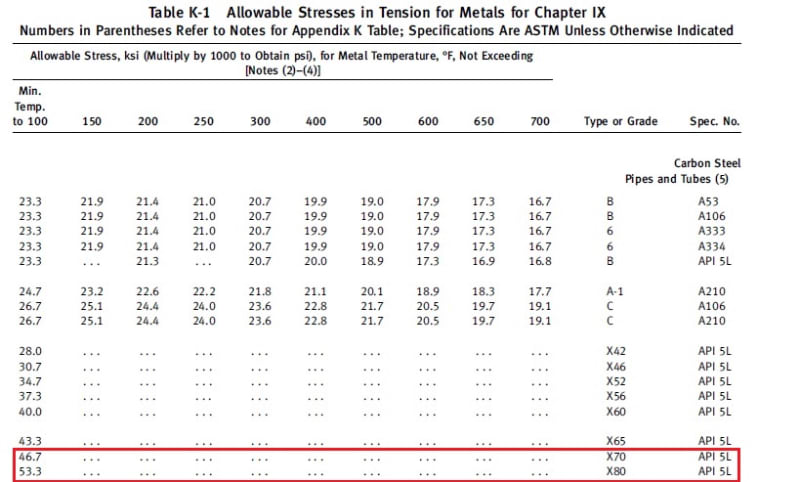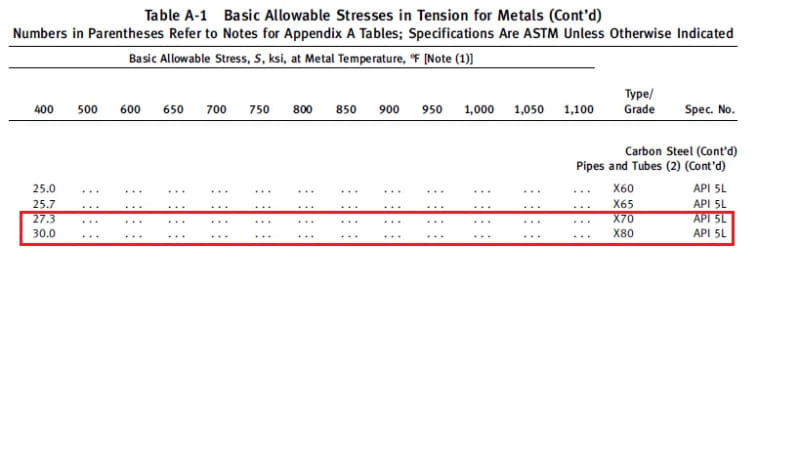Thanks for all the replies.
We are designing a process plant, which the following are the main design conditions:
Pressure disign: 15000psi
Temperature of system: 0°C (32°F) and 200°C (400°F)
Fluids: Water and Nitrogen.
Estimated quantity: 2000m
I had selected the X70 and the X80, but to use them there is a temperature limit, as you can see:
I tried to use the table A-1 , but the allowable stress are much less.
Using the information in table A-1, the following are the required thicknesses for specifics OD:
API 5L X70
- OD 101,6mm -> thick 26mm;
- OD 168,3mm -> thick 42 mm;
- OD 273,1mm -> thick 68 mm.
API 5L X80
- OD 101,6mm -> thick 20mm;
- OD 168,3mm -> thick 33 mm;
- OD 273,1mm -> thick 51 mm.
So, these are not commercial. An alternative is to use N80, due to its high Strength Yield. The following are the required thicknesses for specifics OD:
API 5CT N80
- OD 73mm -> thick 14 mm;
- OD 114,3mm -> 17,10 mm;
- OD 219,1mm -> 32 mm;
Note: The diameters are different because I first calculated using ID and then Commercial OD.
Therefore, I need to know more about the weldability of the N80 and its mechanical behavior at 400 ° F.
I will be very grateful if someone gives me a suggestion.



